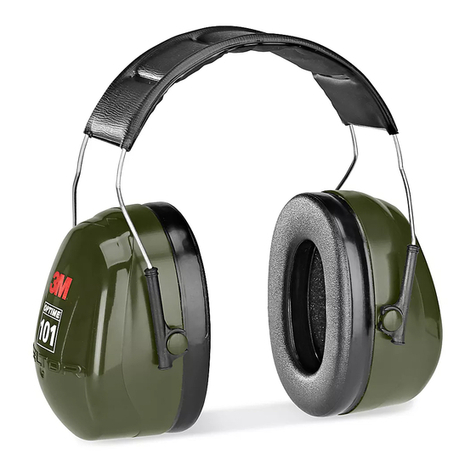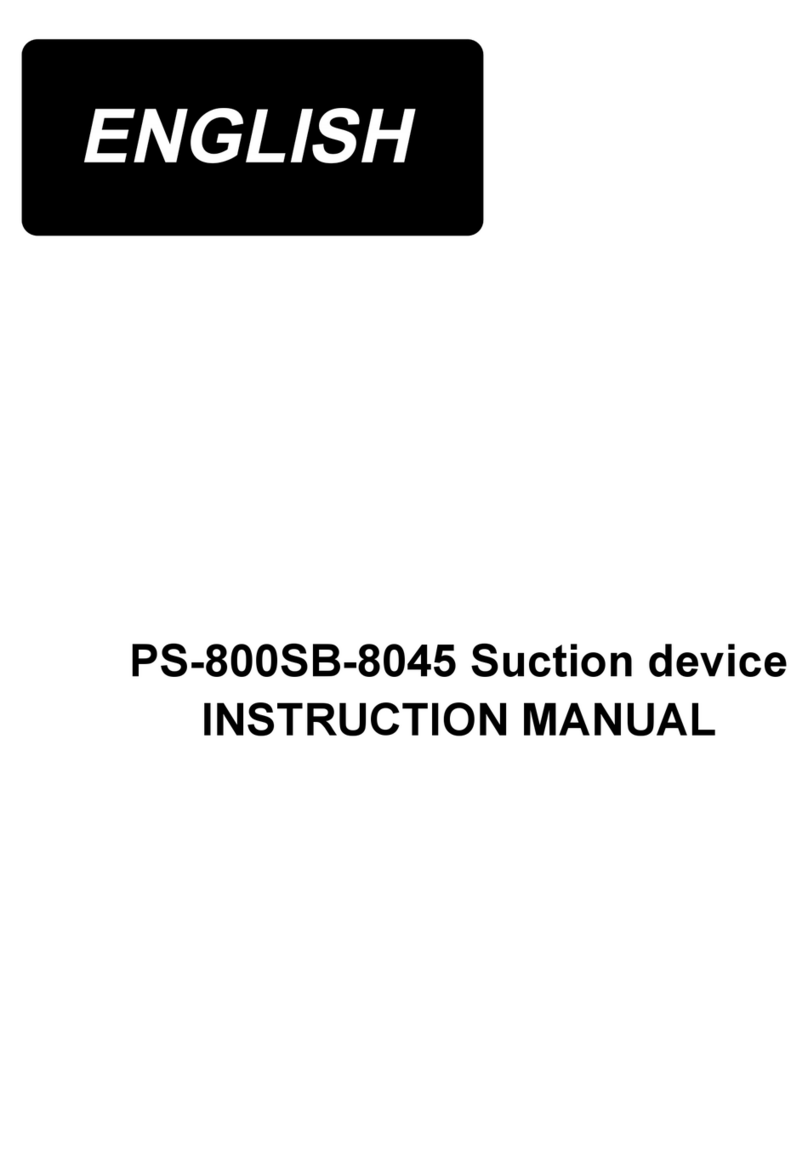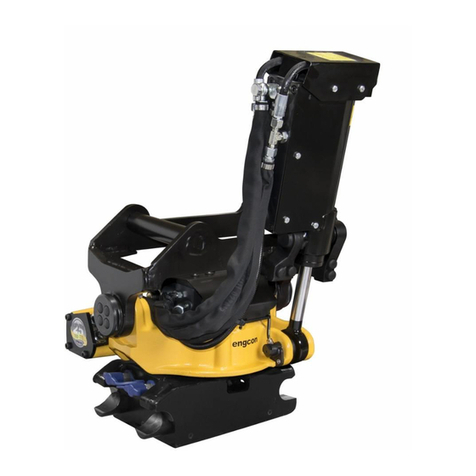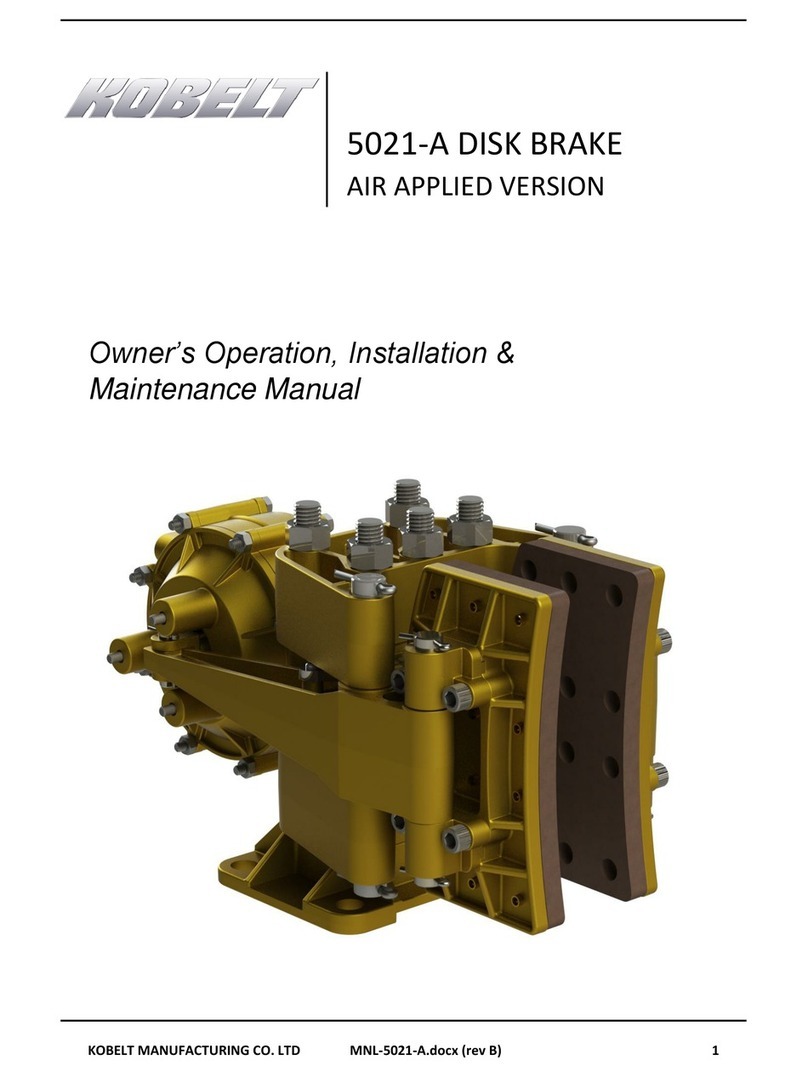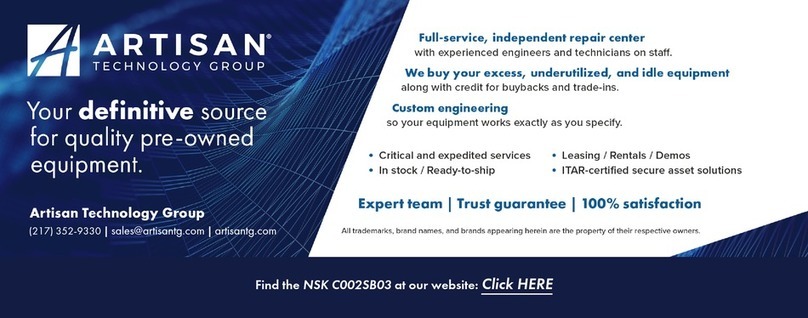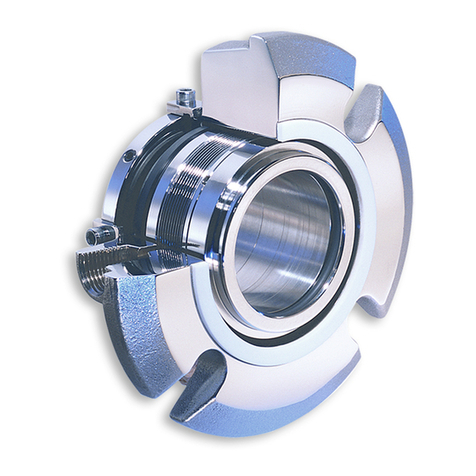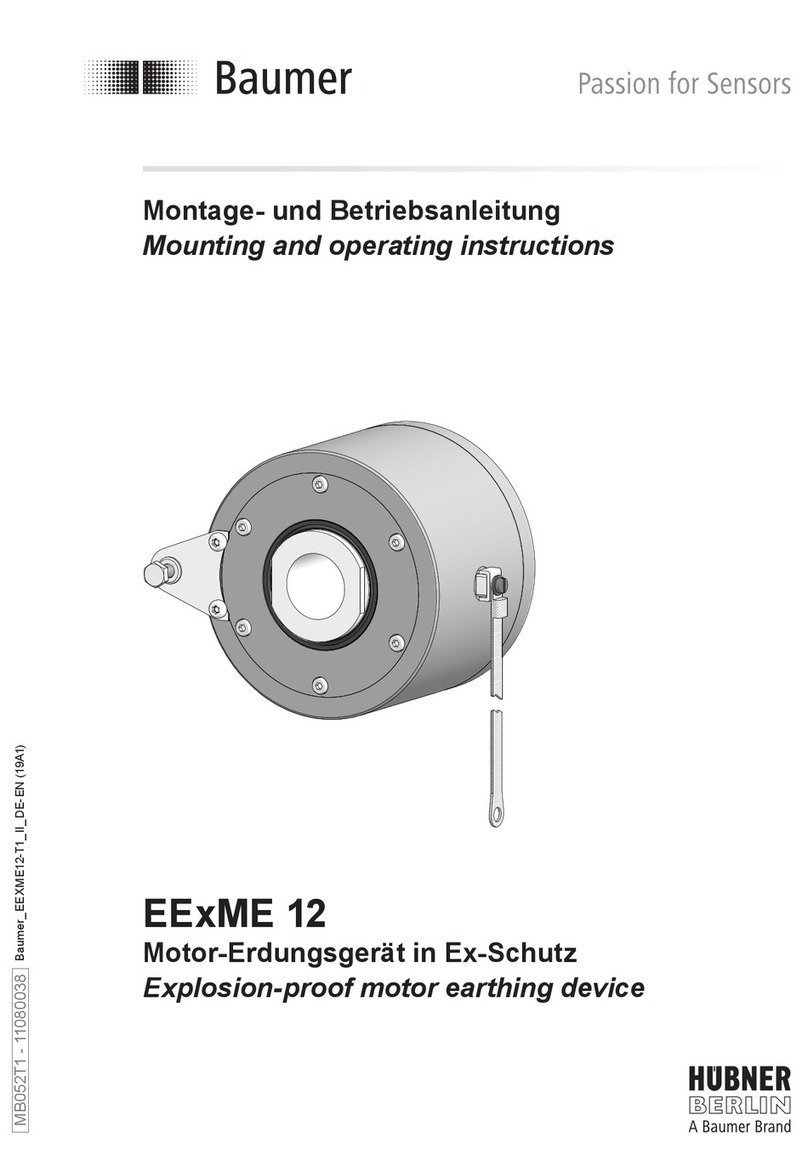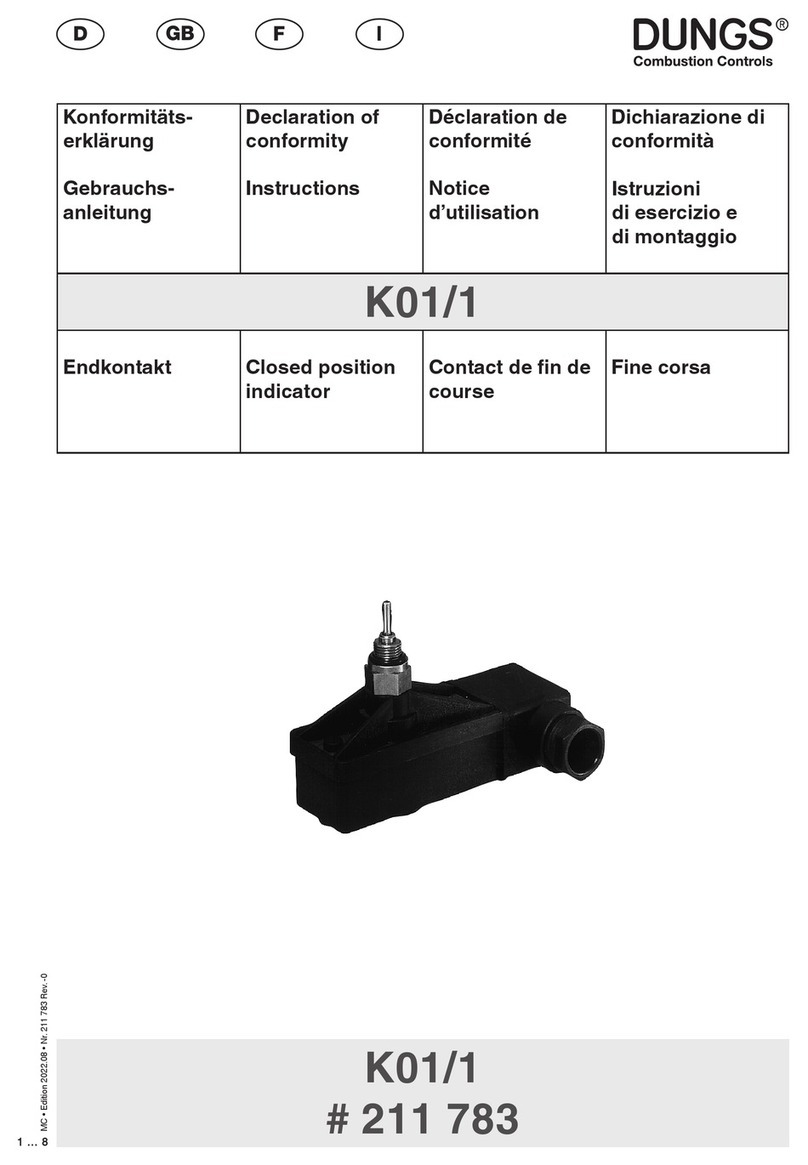Blower Engineering Tri-Lobe TL Series User manual


Page
Customer Letter/ Warranty . . . . . . . . . . . . . . . . . . . . . . . . . . . . . . . . . . . . . . . . . . . . . . . . . 1
1.1 Scope . . . . . . . . . . . . . . . . . . . . . . . . . . . . . . . . . . . . . . . . . . . . . . . . . . . . . . . . . . . . . . . . . . . . 2
1.2 Operating principle . . . . . . . . . . . . . . . . . . . . . . . . . . . . . . . . . . . . . . . . . . . . . . . . . . . . . . . . 2
1.3 Construction . . . . . . . . . . . . . . . . . . . . . . . . . . . . . . . . . . . . . . . . . . . . . . . . . . . . . . . . . . . . . . 2
2.1 Gas conveye . . . . . . . . . . . . . . . . . . . . . . . . . . . . . . . . . . . . . . . . . . . . . . . . . . . . . . . . . . . . . 2
2.2 Working con itions . . . . . . . . . . . . . . . . . . . . . . . . . . . . . . . . . . . . . . . . . . . . . . . . . . . . . . . . 3
2.2.1 Speed of rotation
2.2.2 Pressure
2.2.3 Temperature
Table I: Operation Limits
2.3 Capacity a justment . . . . . . . . . . . . . . . . . . . . . . . . . . . . . . . . . . . . . . . . . . . . . . . . . . . . . . . 3
3.1 Han ling . . . . . . . . . . . . . . . . . . . . . . . . . . . . . . . . . . . . . . . . . . . . . . . . . . . . . . . . . . . . . . . . . 4
3.2 Storage . . . . . . . . . . . . . . . . . . . . . . . . . . . . . . . . . . . . . . . . . . . . . . . . . . . . . . . . . . . . . . . . . . 4
3.2.1 Bearing storage
3.2.2 Preservation of the compression chamber
4.1 On-site positioning of blower . . . . . . . . . . . . . . . . . . . . . . . . . . . . . . . . . . . . . . . . . . . . . . . 4
4.2 Coupling . . . . . . . . . . . . . . . . . . . . . . . . . . . . . . . . . . . . . . . . . . . . . . . . . . . . . . . . . . . . . . . 4-6
4.2.1 Direct coupling
4.2.2 Belt drive coupling
Table IV: Minimum Sheave Diameter
Simplified V-Belt Tensioning Method
Table V: Recommen e Deflection Force per Belt
4.3 Direction of rotation – air flow irection . . . . . . . . . . . . . . . . . . . . . . . . . . . . . . . . . . . . . . 7
4.4 System piping . . . . . . . . . . . . . . . . . . . . . . . . . . . . . . . . . . . . . . . . . . . . . . . . . . . . . . . . . . . . . 7
4.4.1 Inlet pipe
4.4.2 Outlet pipe
4.5 Check valve . . . . . . . . . . . . . . . . . . . . . . . . . . . . . . . . . . . . . . . . . . . . . . . . . . . . . . . . . . . . . . 7
4.6 Safety valve . . . . . . . . . . . . . . . . . . . . . . . . . . . . . . . . . . . . . . . . . . . . . . . . . . . . . . . . . . . . . . 7
4.7 Electrical connection . . . . . . . . . . . . . . . . . . . . . . . . . . . . . . . . . . . . . . . . . . . . . . . . . . . . . . 8
4.8 Preliminary controls . . . . . . . . . . . . . . . . . . . . . . . . . . . . . . . . . . . . . . . . . . . . . . . . . . . . . . . 8
4.9 Start-up . . . . . . . . . . . . . . . . . . . . . . . . . . . . . . . . . . . . . . . . . . . . . . . . . . . . . . . . . . . . . . . . . . 8
4.9.1 First start-up
4.9.2 Normal start-ups
5.0 Operating checks . . . . . . . . . . . . . . . . . . . . . . . . . . . . . . . . . . . . . . . . . . . . . . . . . . . . . . . . . . 9
5.0.1 Daily checks
5.0.2 Check after first 50 hours
5.0.3 Check every 500 hours
5.1 Stopping the blower . . . . . . . . . . . . . . . . . . . . . . . . . . . . . . . . . . . . . . . . . . . . . . . . . . . . . . . 9
6.1 Preventive maintenance . . . . . . . . . . . . . . . . . . . . . . . . . . . . . . . . . . . . . . . . . . . . . . . . . . . . 9
6.1.1 Oil change
7.0 Troubleshooting . . . . . . . . . . . . . . . . . . . . . . . . . . . . . . . . . . . . . . . . . . . . . . . . . . . . . . . . . . 10
8.1 Blower isassembly . . . . . . . . . . . . . . . . . . . . . . . . . . . . . . . . . . . . . . . . . . . . . . . . . . . . . . . 11
9.1 Blower in operation . . . . . . . . . . . . . . . . . . . . . . . . . . . . . . . . . . . . . . . . . . . . . . . . . . . . . . 11
9.2 Before any blower service . . . . . . . . . . . . . . . . . . . . . . . . . . . . . . . . . . . . . . . . . . . . . . . . . 11
9.3 During blower service . . . . . . . . . . . . . . . . . . . . . . . . . . . . . . . . . . . . . . . . . . . . . . . . . . . . . 12
10.1 Oil type . . . . . . . . . . . . . . . . . . . . . . . . . . . . . . . . . . . . . . . . . . . . . . . . . . . . . . . . . . . . . . . . . 12
10.2 Oil viscosity . . . . . . . . . . . . . . . . . . . . . . . . . . . . . . . . . . . . . . . . . . . . . . . . . . . . . . . . . . . . . 12
10.3 Recommen e oils . . . . . . . . . . . . . . . . . . . . . . . . . . . . . . . . . . . . . . . . . . . . . . . . . . . . . . . 12
10.4 Minimum working temperature . . . . . . . . . . . . . . . . . . . . . . . . . . . . . . . . . . . . . . . . . . . . 12
Sectional rawings an parts escriptions . . . . . . . . . . . . . . . . . . . . . . . . . . . . . . . . . 13-18
Bare Shaft Dimension Chart – Vertical Flow . . . . . . . . . . . . . . . . . . . . . . . . . . . . . . . . . 19
Design Features / Tri-Lobe Blower Performance Chart . . . . . . . . . . . . . . . . . . . . . . . . 20
Blower En ineerin Instructional Manual
TABLE OF CONTENTS

Blower En ineerin Instructional Manual 1
Dear Customer,
Thank you for purchasing a Blower Engineering product.
You are strongly recommended to take the following preliminary actions:
1. The instructions given in this manual must be strictly followed prior to positioning
and operating the machine.
2. The maintenance operations are to be carried out exactly as described in this manual.
3. Safety regulations are to be complied with completely.
4. The operators and the personnel in charge must be well acquainted with these
instructions, which must be available to them whenever required.
5. The use of the machine must be only as described in the operating manual.
The model number of the blower and pertinent serial number are to be quoted any time additional
information is requested. The serial number is applied on the nameplate fixed to the machine.
Warranty
We warrant that this product will be free from defects in material and workmanship for a period of 18 months
from date of shipment. Within the warranty period, we shall repair or replace, F.O.B. our plant, such products
that are determined by us to be defective.
This warranty will not apply to any product that has been subjected to misuse, negligence or accident or
misapplied or improperly installed. This warranty will not apply to any product which has been disassembled,
repaired or otherwise altered by any persons not authorized by our Service Department.
Errors and omissions excepted.
Information to change on a moments notice.

1.1 Scope
This manual applies to Rotary Blowers of the TL Series from size 10 to size 900.
1.2 Operating principle
T Series Blowers are positive displacement blowers comprising two conjugate shaped Tri- obe
rotors which rotate inside a “figure 8” shaped body. The incoming gas is trapped in the space that
forms between the body (figure 1a, 1b) and discharged via the outlet (figure 1c, 1d). The operating
pressure is generated by the resistance met by the gas exiting the unit. The capacity is proportional
to the speed of rotation and is almost constant when the operating pressure varies.
1.3 Construction
The T Series Blower is engineered for the smoothest possible flow of air, resulting in lower
pulsation and noise.
The body is closed at both ends by end plates in which the housings for the seals and bearings are
located. The rotors are synchronized by a pair of timing gears having helical, hardened and ground
teeth. The shafts have labyrinth seals; gas leaks are collected in special air spaces in the covers and
are discharged into the atmosphere. Two sumps are mounted on the covers which act as oil sumps
for splash lubrication of the bearings and the synchronizing gears. The gears are secured on the
shafts through conical coupling under oil pressure.
2.1 Gas conveyed
The blower can be used to convey inert gases such as air, nitrogen or other gases which are com-
patible with the lubricating oil and with the materials used in the construction of the blower.
WARNING: The blower cannot be use to convey gases which are explosive, toxic
or in any way angerous.
NOTE: To convey special gases cons lt Blower Engineering.
Number Description
1 Body
2 Rotor
3 Rotor
4 End lates
5 Gears
6 Labyrinth Seals
2
1a 1b 1c 1d
Fig. 1
Fig. 2
213 5 64 4 6
Blower En ineerin Instructional Manual

Blower En ineerin Instructional Manual 3
2.2 Working conditions
2.2.1 Speed of rotation – The maximum speed of rotation is shown in Table I. The minimum
speed of rotation depends on the maximum allowed differential temperature.
2.2.2 Pressure – The inlet pressure ranges from 3 psig (20.7 kPa) to 15 psig (103.4 kPa). The maxi-
mum differential pressure is shown in Table I, and depends on the size of the blower. The maximum
compression ratio for all sizes of blowers is 2.
2.2.3 Temperature – The inlet temperature of the gas ranges from -13ºF (-25ºC) to 122ºF (50ºC).
The maximum differential temperature allowed is shown in Table I, and depends on the size of
the blower. The maximum temperature of the gas allowed at the discharge is 266ºF (130ºC).
Table I: Operation Limits
2.3 Capacity adjustment
Capacity can only be adjusted in one of the two following ways:
• Varying the speed of rotation. This can be achieved via belt drives or by varying the
electric motor supply voltage frequency or with a double polarity motor.
• Bleeding off of excess capacity via a regulating valve on the outlet
Do not use the safety valve for this purpose because it will suffer excessive wear.
Do not re-circulate the excess gas into the blower inlet without cooling because it could
cause excessive heating.
WARNING: Do not a just the gas capacity by using throttle valves place on the
inlet or outlet piping.
TL Arrangement Delta T
Size Vertical Horiz. psig “Hg ºF ºC
TL10 4800 4800 13 13 190 105
TL20 4800 4800 13 13 190 105
TL30 4800 4800 15 15 200 110
TL40 4800 4800 15 15 200 110
TL41 4800 4800 11 12 165 90
TL50 4800 3000 15 15 200 110
TL60 4800 3000 15 15 200 110
TL61 4800 3000 11 12 165 90
TL70 3800 2200 15 15 200 110
TL80 3800 2200 15 15 200 110
TL81 3800 2200 11 12 165 90
TL90 3000 1900 15 15 200 110
TL100 3000 1900 15 15 200 110
TL101 3000 1900 10 12 150 83
TL110 2400 1500 15 15 200 110
TL120 2400 1500 12 13 180 100
TL600 1800 1125 15 15 200 110
TL900 1800 1125 12 13 180 100

4
3.1 Handling
To hoist the blower, use a cable as
shown in fig. 3
WARNING: Do not use the holes in the
flanges to lift the blower.
3.2 Storage
Keep the blower in a dry cool closed environment. Do not remove the protective coverings placed
over the blower openings. Rotate blower shaft 2-3 complete turns every 6 months. Renew the
preservation every 6 months, or more frequently if the climate is damp.
3.2.1 Bearing storage – Half fill the sumps with anti-rust oil. Manually rotate the blower shaft.
Dispose of the used oil in accordance with local regulations.
3.2.2 Preservation of the compression chamber – Remove the protective coverings from the
blower openings. Apply a thin film of anti-rust oil to the internal surfaces of the body, covers and
the rotor surfaces.
WARNING: Use anti-rust an foam inhibiting oil with fire point over 392ºF (200ºC) only.
4.1 On-site positioning of blower
The blower has to be set horizontally on a level surface and attached using bolts which secure the
feet or the outlet flange. Place shims under feet of blower to prevent overstressing of the housing.
4.2 Coupling
4.2.1 Direct coupling – Slide the half couplings onto the shaft of the blower and of the motor
using suitable tools.
•Align the shafts of the blower and of the motor and, where necessary insert shims under the feet
of the motor and/or blower.
•Check the alignment by using calipers or gauges as per coupling manufacturer’s specifications.
WARNING: Do not use a hammer to sli e on the half couplings.
4.2.2 Belt drive coupling – Use suitable equipment to mount the sheaves onto the blower and
motor shafts. The minimum blower sheave diameters are shown in Table IV – see page 5.
Mount the drive belts. Belt tension is produced by using the motor thrust screws in accordance
with the values shown in Table V – see page 6. During this phase, the alignment of the sheaves
must be checked using a scale resting against the sheaves as shown in figure 5 – see page 6.
WARNING: Do not use a hammer to mount the sheaves.
WARNING: Excessive belt tension coul amage the blower an the motor.
Secure the feet of the motor.
Horizontal: /H ertical: /
Fig. 3
Blower En ineerin Instructional Manual

Blower En ineerin Instructional Manual 5
Differential Pressure [psi / kPa]
TL 3 20.7 5 34.5 6 41.4 7 48.3 8 55.2 10 68.9 12 82.7 13 89.6 15 103.4
TL10 3.20 80 3.20 80 3.20 80 3.20 80 3.20 80 3.20 80 3.20 80 3.20 80 XX
TL20 3.20 80 3.20 80 3.20 80 3.20 80 3.20 80 3.20 80 3.20 80 3.20 80 XX
TL30 4.00 100 4.00 100 4.00 100 4.00 100 4.00 100 4.40 112 4.40 112 4.40 112 4.40 112
TL40 4.00 100 4.00 100 4.00 100 4.00 100 4.40 112 4.40 112 4.40 112 4.40 112 4.40 112
TL41 4.00 100 4.00 100 4.00 100 4.40 112 4.40 112 4.40 112 4.40 112 XXXX
TL50 4.70 118 4.70 118 4.70 118 5.20 132 5.20 132 5.50 140 5.50 140 5.50 140 5.50 140
TL60 5.20 132 5.20 132 5.20 132 5.20 132 5.50 140 5.50 140 5.50 140 5.50 140 5.50 140
TL61 5.20 132 5.20 132 5.50 140 5.50 140 5.90 150 5.90 150 5.90 150 XXXX
TL70 5.50 140 5.50 140 5.90 150 5.90 150 6.30 160 6.30 160 6.30 160 6.30 160 6.30 160
TL80 5.50 140 5.50 140 5.90 150 6.30 160 6.30 160 6.30 160 6.30 160 6.30 160 6.30 160
TL81 6.00 160 6.00 160 6.70 170 6.70 170 7.10 180 7.10 180 7.10 180 XXXX
TL90 7.90 200 7.90 200 7.90 200 7.90 200 7.90 200 9.00 225 9.00 225 9.90 250 9.90 250
TL100 7.90 200 7.90 200 7.90 200 7.90 200 9.00 225 9.00 225 9.90 250 9.90 250 10.90 275
TL101 7.90 200 7.90 200 7.90 200 7.90 200 9.00 225 9.00 225 XXXXXX
TL110 7.90 200 7.90 200 7.90 200 9.00 225 9.30 236 9.90 250 9.90 250 9.90 250 11.80 300
TL120 7.90 200 7.90 200 9.00 225 9.30 236 9.90 250 9.90 250 11.80 300 XXXX
TL600 9.30 236 9.30 236 9.30 236 9.90 250 11.80 300 13.80 350 13.80 350 13.80 350 13.80 350
TL900 9.30 236 9.30 236 9.30 236 9.90 250 11.80 300 13.80 350 13.80 350 XXXX
Table I : Minimum sheave diameter [inches / mm]
Check pressure ra ing for all blowers

6Blower En ineerin Instructional Manual
Table : Recommended Deflection Force per Belt
2.20 56 1200 - 3600 2.8 1.27 4.1 1.86
2.35 - 2.50 60 - 64 1200 - 3600 3.2 1.45 4.7 2.13
2.65 - 2.80 67 - 71 1200 - 3600 2.00 3.5 1.59 5.1 2.31
3VX 3.00 - 3.15 76 - 81 1200 - 3600 to 3.8 1.72 5.5 2.49
3.35 - 3.65 85 - 93 1200 - 3600 4.00 4.1 1.86 6.0 2.72
4.12 - 5.00 105 - 127 900 - 3600 4.8 2.18 7.1 3.22
5.30 - 6.90 135 - 175 900 - 3600 5.8 2.63 8.6 3.90
4.40 - 4.65 112 - 118 1200 - 3600 9.0 4.08 13 5.90
4.90 - 5.50 124 - 140 1200 - 3600 10 4.54 15 6.80
5VX 5.90 - 6.70 150 - 170 1200 - 3600 2.00 11 4.99 17 7.71
7.10 - 8.00 180 - 203 600 - 1800 to 13 5.90 19 8.62
8.50 - 10.90 216 - 277 600 - 1800 4.00 14 6.35 20 9.07
11.80 - 16.00 300 - 406 400 - 1200 15 6.80 23 10.43
7.10 - 8.00 180 - 203 600 - 1800 2.00 11 4.99 16 7.26
5V 8.50 - 10.90 216 - 277 600 - 1800 to 13 5.90 18 8.16
11.80 - 16.00 300 - 406 400 - 1200 4.00 14 6.35 21 9.53
12.50 - 17.00 318 - 432 600 - 1200 2.00 28 12.70 41 18.60
8V to
18.00 - 24.00 457 - 610 400 - 900 4.00 32 14.51 48 21.77
* If replacing 3V or 5V belts with the same belt length and same number of belts in 3VX or 5VX
cross section, belt tension does not need to be increased.
NOTE: New drives designed with 3VX or 5VX belts sho ld be tensioned at the respective deflection
force val e shown in above table.
V-Belt
Cross Small Sheave Diameter Range Small Sheave Speed Ratio Recommended Deflection Force
Section RPM Range Range Minim m Maxim m
inches mm lbs kg lbs kg
Simplified -Belt Tensioning Method
Step 1– Determine the force required
to deflect one belt 1/64"
per inch (1/64th cm per
centimeter) of span length.
Step 2– Measure the span length of
your drive. Compare this
deflection force with the
range given in Table V.
If it is less than the
minimum recommended
force, the belts should be
re-tensioned.
If it is more than the
maximum recommended
force, the drive is tighter
than it needs to be.
SpanLength,t
Force
Deflection
1/64" per
inch of span
Tension Measured By Deflection
Fig. 5

Blower En ineerin Instructional Manual 7
4.3 Direction of rotation – air flow direction
Fig. 6
WARNING: Do not use the blower with a irection of rotation or a flow irection which
iffers from that shown in figure 6.
4.4 System piping
The diameters of the system piping must never be smaller than the diameters of the blower openings.
If the diameters are different, use a taper connector. The system piping should be properly aligned
and supported to prevent placing stress on the blower. Provide flexible joints. The pipes must be
thoroughly cleaned before connection. The gaskets must not interfere with the gas system.
WARNING: Remove the protective covers from the blower openings before connecting the pipes.
4.5 Check valve
To stop the counter-rotation of the blower when it stops while loaded, install a check valve on the
discharge, when acting under pressure, or on the inlet when acting under vacuum conditions.
4.6 Safety valve
To limit the maximum operating pressure of the blower use a safety valve on the discharge, when
acting under pressure, or on the inlet when acting under vacuum conditions.
WARNING: Install the safety valves as close as possible to the inlet/outlet at the blower,
without placing shut-off valves in-between.
4.4.1 Inlet pipe
•Connect a silencer directly to the inlet of the
blower.
•Thoroughly clean.
•If necessary install a dirt filter for the first
100 working hours.
•Install a pressure gauge to check the dirt filter.
•Support the pipe.
4.4.2 Outlet pipe
•Connect a silencer directly to the outlet
of the blower.
•Support the piping at the point nearest
to the flexible coupling.
• Insulate the pipes so as to avoid heating
the environment and as a precaution to
accidental contact.
GAS
GAS

8
4.7 Electrical connection
Use only authorized specialists to set up the electrical system, working in compliance with regu-
lations applying to the place of installation and in accordance with the requirements of the local
body supplying electrical energy. Check on the motor plate:
• Voltage • Frequency
• Number of phases • Absorbed current
Connect the cables as shown in the diagram accompanying the terminal box of the motor. If the
diagram has not been supplied, request it from the motor manufacturer. Use electrical cables of suitable
size, depending on the nominal current of the electrical motor. Keep the electric cables away from
heat sources and/or pointed edges. The motor must be protected by means of an automatic switch
set at the value of the rated current shown on the plate. For the safety of personnel, the system must
be protected by a suitable grounding device.
WARNING: Blower service must be carrie out only after isconnecting the electric sup ply.
4.8 Preliminary controls
If the blower has been in storage for more than 6 months, check its state of preservation.
• Check the coupling or the sheave alignment
• Check the belt tension.
• Check that the blower shaft rotates freely manually.
• Check that the safety protection devices have been correctly installed and secured.
• Fill the blower with oil as described in paragraph 6.1.1.
4.9 Start up
4.9.1 First start-up
Open the shut-off valve.
• Check that the safety valve has been set at the operating value.
• Check the rotation by ‘jogging’ the motor.
WARNING: During this operation, personnel are in irect contact with the blower, an
for this reason noise protection must be worn.
Start the blower
• Increase the operating pressure gradually until the rated value is reached.
• After about 10 to 20 minutes check that there are no oil leakages and strange noises or
vibrations. If such problems are found, stop the blower immediately.
WARNING: Do not rotate the blower in the wrong irection for more than a few revolutions.
4.9.2 Normal start-ups – With direct start-up the motor starts even with the maximum discharge
counter-pressure. With star-delta start-up, on the other hand, or with the starter; the counter-pressure
must be zero.
Blower En ineerin Instructional Manual

Blower En ineerin Instructional Manual 9
5.0 Operating checks
5.0.1 Daily checks – With the blower running, check: Outlet temperatures.
• Discharge pressure (when functioning under pressure).
• Suction pressure (when functioning in vacuum conditions).
• Absorbed power.
5.0.2 Check after first 50 hours – With the blower shut down, check: The oil level.
• Oil leaks. • Auxiliary circuit leaks. • Belt tension.
5.0.3 Check every 500 hours – With the blower shut down, check: The oil level.
• Oil viscosity and condition. • Flexible coupling inserts.
• Belt wear. • Auxiliary circuits.
5.1 Stopping the blower
If possible, remove the counter-pressure. Stop electric supply.
The blower can also be stopped in the presence of the counter-pressure but, because of the high
current absorption of the electric motor; problems with the electric circuit could result.
WARNING: Check that the eceleration of the blower is even an without vibrations.
6.1 Preventive maintenance
6.1.1 Oil change
The first oil change should be performed after 100 working hours. Further oil changes are performed
every 2000 working hours. Oil should be checked regularly and oil changes made more frequently if
lubricant becomes contaminated due to adverse conditions. The type of oil is shown in paragraph 10.
WARNING: Dispose of the use oil in accor ance with the local regulations.
WARNING: Regar less, stick to the half way mark on the oil level sight glass.
21
21
Oil quantity: Vertical (qts / L) Oil quantity: Horizontal (qts / L)
Blower Size 12Total 12Total
TL10 - 20 0.33 0.31 0.71 0.67 1.04 0.98 0.22 0.21 0.44 0.41 0.66 0.62
TL30-40-41 0.60 0.56 1.11 1.05 1.71 1.61 0.40 0.38 0.76 0.72 1.16 1.10
TL50-60-61 0.85 0.80 1.75 1.65 2.60 2.45 0.57 0.54 1.10 1.04 1.67 1.58
TL70-80-81 1.67 1.58 3.30 3.11 4.97 4.69 1.11 1.05 2.11 2.00 3.22 3.05
TL90-100-101 3.20 3.00 5.80 5.50 9.00 8.50 1.80 1.70 3.44 3.25 5.24 4.95
TL110-120 4.23 4.00 9.00 8.50 13.23 12.50 2.64 2.50 5.30 5.00 7.94 7.50
TL600-900 9.50 9.00 19.00 18.00 28.50 27.00 6.34 6.00 10.60 10.00 16.94 16.00
Fig. 7 – Horizontal
Fig. 7 – Vertical

10Blower En ineerin Instructional Manual
7.0 Troubleshooting
Cause Remedies
7.1 Inlet pressure different from the design value
Inlet piping is clogged Check piping and remove obstruction
Rotation speed is not the same as design R M Check rotation speed and reset to design R M
7.2 Outlet pressure different from the rated value
Outlet piping is clogged Check piping and remove obstruction
Rotation speed is not the design R M Check rotation speed and reset to design R M
7.3 Outlet temperature different from the rated value (stop the blower immediately)
Inlet temperature different from design value Check inlet temperature and reset to rated value
Compression ratio is not the same as the Check inlet and outlet pressures and reset to
design conditions rated values
Rotors are worn Measure clearances of rotors
7.4 Power absorbed different from the rated value
Differential pressure different from rated value Check the inlet and outlet pressure and reset to
rated value
Speed of rotation is not the same as rated value Check the speed of rotation and reset to
rated value
Incorrect electrical connection Check electrical system
Rotors making contact Stop blower immediately (see paragraph 7.3)
7.5 Loss of oil
Drive shaft seal is worn Replace the drive shaft seal
Oil drain and level plugs gaskets are worn Replace the gaskets
Oil level sight glasses are broken Replace sight glasses, fill with oil
7.6 High oil temperature
Oil level too high Reset correct oil level (see paragraph 6.1.1)
Oil too viscous Use less viscous oil
High differential pressure See paragraph 7.2
Oil produces foam Change the type of oil
7.7 nusual noises and/or vibrations (stop the blower immediately)
Differential pressure exceeds rated value Check inlet and outlet pressures and reset to
rated values
Discharge temperature exceeds rated value see paragraph 7.3
Rotors making contact Stop blower immediately, measure gear and
rotor clearances
Scale on internal parts Thoroughly clean the rotors and compression
chamber
Bearings are worn Measure bearing clearances and, if necessary,
replace them
Intake of foreign particles Remove foreign particles, clean the inside of
the blower

Blower En ineerin Instructional Manual 11
8.1 Blower disassembly
Disassembly of the blower within the warranty period results in the cancellation of the warranty.
Disassembly repair work and reassembly of the blower must be carried out only by skilled
personnel and with the aid of suitable equipment and the relevant manual. This manual contains
only the instructions for preventative maintenance. For any references to components see attached
sections.
NOTE: The warranty does not cover damages ca sed by operations carried o t incorrectly
d ring disassembly and/or reassembly of the blower.
WARNING: Before starting isassembly of the blower, make sure that the power has been
isconnecte . Follow the instructions in paragraph 9.2.
Disassemble the drive components (sheave or coupling), following the manufacturer's instructions
if there are locking devices or by means of an extractor if attached directly onto the shaft.
WARNING: Do not hammer the shaft, coupling or sheave.
Personnel who may come into contact with the blower must observe the most elementary safety
rules in order to minimize the possibility of suffering physical injury With this in mind, all personnel
who work in or pass through the area where the blower is functioning must be instructed in the
safety rules to follow and must be warned through the use of danger notices.
9.1 Blower in operation
Do not touch the external surfaces of the blower because they could reach temperatures higher
than 285ºF (141ºC) and therefore cause burns.
• Do not hold objects or insert limbs into the blower openings because the moving rotors
could cause serious physical injury.
• Provide suitable protection devices for the coupling and/or drive belts.
• If the blower is operating disconnected from system piping, place a screen in front of the
inlet and keep away from the blower outlet flow.
• Do not open the oil plugs.
• Do not turn off the safety systems which are provided.
• Do not stand too close to the safety valve discharge.
• Avoid prolonged exposure to the noise produced by the blower, if suitable protection is not
worn. The sound pressure near the blower could be greater than 85 dB (A).
9.2 Before any blower service
Stop the blower by disconnecting the electrical supply.
• Disconnect the electrical supply cables.
• Bring the unit to atmospheric pressure.
WARNING: The gas containe in the blower may be hot, toxic an irritant.

12Blower En ineerin Instructional Manual
9.3 During blower service
Check that all operations described in Paragraph 9.2 have been completed.
• Use adequate equipment and procedures to disconnect and handle the system piping.
• Use adequate equipment to disassemble the blower components.
• Use adequate equipment and procedures to hoist the blower and its main parts.
10.1 Oil type
10.2 Oil viscosity
10.3 Recommended oils
10.4 Minimum working temperature
Check that the pour point of the oil is less than the minimum temperature that can be reached in
the ambient. If this is not the case, select an oil with a lower viscosity (a g.: ISO VG-100), or use
an oil specially made for low temperatures according to recommendations of oil producers.
Oil Type ISO Class Acc. To
Mineral oil for general use C, CL, CL DIN 51517
Mineral oil for hydrostatic and hydrodynamic circuits H, HL DIN 51524
Mineral oil for internal combustion engines HD
Synthetic oil
ISO Class SE
ISO - VG 150 oil temperature up to 176ºF (80ºC) compression ratio up to 1.7 gas
discharge temperature up to 230ºF (110ºC) ambient temperature up
to 95ºF (35ºC).
ISO - VG 220 oil temperature up to 230ºF (110ºC) compression ratio higher than 1.7
gas discharge temperature up to 230ºF (110ºC) ambient temperature
higher than 95ºF (35ºC) installation in soundproof enclosure.
Make Type ISO VG - 150 our point ISO VG - 220 our point
°F °C °F °C
Mobil Nuto 150 0 -18 n/a n/a n/a
etro- Compro
Canada XL-S 150 -11 -24 n/a n/a n/a
Mobil Synthetic SHC630 -49 -45 SHC630 -49 -45

Blower En ineerin Instructional Manual 13
TL10, TL20, TL30, TL 40 & TL41
Qty Per Part Part
Blower N mber Description
2 48 gear locking nut
1 47 pacer
1 46 pacer
20 45 bolt
1 44 headplate, drive
1 41 cylinder
1 40 headplate, gear
4 39 oil pla h di c
3 38 circlip
2 35 inner cover
1 34 oil linger, drive
1 33 oil linger, gear
1 32 pring pin, gear
1 31 drive ump
1 30 gear ump
2 29 lock wa her
1 27 wa her
2 26 wa her
1 25 bolt
6 24 adju ting ring
2 23 gear pacer
2 21 pacer
Qty Per Part Part
Blower N mber Description
2 19 pacer
4 17 ealing chamber
1 16 lock nut, drive haft
4 14 pre-load wa her
1 13 key, haft
1 12 driven rotor
1 11 drive rotor
49ring holder
18gear, driven
17gear, drive
16 6 pi ton ealing ring
15haft leeve
14lip eal
13bearing
12bearing
21bearing
Listings not shown
8 50 o-ring
8 37 adju ting wa her
2 22 bearing wa her
4 20 fill, drain plug
4 15 oil level ight gla
23 35 14 38 21 11 17 6 9 2
39 19 45 34 47 5
13
16
4
46
25
27
3
31
44
12
41
40
29
26
33
48
32
30
8
24
7 1

14
TL50, TL60 & TL61
Qty Per Part Part
Blower N mber Description
2 47 gear locking nut
1 46 extraction ring
1 45 extraction ring
28 44 bolt
1 43 headplate, drive
1 41 cylinder
1 40 headplate, gear
4 39 oil pla h di c
3 38 circlip
2 35 inner cover
1 34 oil linger, drive
1 33 oil linger, gear
1 31 drive ump
1 30 gear ump
2 29 lock wa her
1 27 wa her
2 26 wa her
1 25 bolt
6 24 adju ting ring
2 23 gear pacer
2 21 pacer
2 19 pacer
Qty Per Part Part
Blower N mber Description
4 17 ealing chamber
1 16 lock nut, drive haft
4 14 pre-load wa her
1 13 key, haft
1 12 driven rotor
1 11 drive rotor
49ring holder
18gear, driven
17gear, drive
16 6 pi ton ealing ring
15haft leeve
14lip eal
13bearing
12bearing
21bearing
Listings not shown
8 49 o-ring
8 37 adju ting wa her
1 32 pring pin, gear
2 22 bearing wa her
4 15 oil level ight gla
Blower En ineerin Instructional Manual
12 17 19 43 3
27
25
31
13
5
16
4
46
45
34
2
9
11
6
38
1
35
2323
24
7
47
30
33
29 26 44 40
14 21 39 41
8

Blower En ineerin Instructional Manual 15
TL70, TL80 & TL81
Qty Per Part Part
Blower N mber Description
2 47 gear locking nut
2 46 pacer
32 45 bolt
1 44 headplate, drive
1 41 cylinder
1 40 headplate, gear
4 39 oil pla h di c
3 38 circlip
2 35 inner cover
1 34 oil linger, drive
1 33 oil linger, gear
1 31 drive ump
1 30 gear ump
2 29 lock wa her
2 27 wa her
2 26 wa her
1 25 bolt
6 24 adju ting ring
2 23 gear pacer
2 21 pacer
2 19 pacer
Qty Per Part Part
Blower N mber Description
4 17 ealing chamber
1 16 lock nut, drive haft
6 14 pre-load wa her
1 13 key, haft
1 12 driven rotor
1 11 drive rotor
49ring holder
18gear, driven
17gear, drive
16 6 pi ton ring eal
15haft leeve
14lip eal
13bearing
12bearing
21bearing
Listings not shown
8 48 o-ring
8 37 adju ting wa her
2 22 bearing wa her
4 15 oil level ight gla
23 45 14
40
21 39 12 19 38 3
25
27
4
5
16
13
46
31
34
442
11
41
617
9
1
35
7
30
33
47
24
26
29
8

16
Blower En ineerin Instructional Manual
TL90, TL100 & TL101
3
31
23
2
33
6
14
12
51
4
29
15
36
5
20
17
16
1
34
9
32
27
22
13
19
8
28
21
46 39 40 10 72541 241845
Qty Per Part Part
Blower N mber Description
4 51 drive haft lock nut
24 46 bolt
1 45 drive headplate
1 41 cylinder
1 40 driven headplate
3 39 circlip
1 36 pring holding ring
2 34 inner cover
1 33 oil linger, drive
1 32 oil linger, gear
1 31 bolt
1 29 drive ump
1 28 gear ump
2 27 lock wa her
4 25 pre-load wa her
2 24 ring holder, drive
1 23 wa her
2 22 wa her
2 21 pacer
1 20 oil pla h di c
2 19 gear lock nut
4 17 ealing chamber
4 16 pre-load wa her
1 15 key, linger
1 14 key, haft
Qty Per Part Part
Blower N mber Description
1 13 haft-pi ton, driven
1 12 haft-pi ton, drive
2 10 ring holder, gear
19gear, drive
18gear, driven
16 7 pi ton ealing ring
16haft leeve
25pring
14lip eal
13bearing
12bearing
21bearing
Listings not shown
8 37 adju ting wa her
4 26 oil level ight gla

Blower En ineerin Instructional Manual 17
TL110 & TL120
35 49 50 40 17 41 12 47 44 1
45
27
25
36
34
2
4
513
53
31
28
46
24
19
47
11
14
9
6
2138
1
51
23
30
33
29
16
7
8
26
3
Qty Per Part Part
Blower N mber Description
1 53 drive haft lock nut
2 51 pacer
32 50 bolt
2 49 gear ide bearing
upport
2 47 ring holder, drive
1 46 pring holding ring
1 45 drive ide bearing
upport
1 44 drive headplate
1 41 cylinder
1 40 driven headplate
3 38 circlip
12 36 bolt
2 35 inner cover
1 34 oil linger drive
1 33 oil linger, gear
1 31 drive ump
1 30 gear ump
2 29 lock wa her
1 28 key, linger
1 27 wa her
2 26 wa her
1 25 bolt
2 24 pring
Qty Per Part Part
Blower N mber Description
2 23 pacer
3 21 oil pla h di c
1 19 oil pla h di c
4 17 ealing chamber
2 16 gear lock nut
6 14 pre-load wa her
1 13 key, haft
1 12 rotor driven
1 11 rotor drive
29ring holder, gear
18gear, driven
17gear, drive
16 6 pi ton ealing ring
15haft leeve
14lip eal
23bearing
12bearing
31bearing
Listings not shown
16 37 adju ting wa her
4 15 oil level ight gla

18
TL600 & TL900
Blower En ineerin Instructional Manual
14
21 6
1
51
29
16
35
33
23
26
3
7
30
49 45 40 38
8
17 11 41 47
19
24
46
36 28
53
4
13
54
34
56
25
27
58
31
44
12
2
5
9
Qty Per Part Part
Blower N mber Description
4 58 bolt
1 56 drive ide bearing
upport
1 54 haft eal hou ing
1 53 drive haft lock nut
2 51 pacer
2 49 gear ide bearing
upport
2 47 ring holder drive
1 46 pring holding ring
1 44 drive headplate
1 41 cylinder
1 40 driven headplate
3 38 circlip
4 36 pacer
2 35 inner cover
1 34 oil linger, drive
1 33 oil linger, gear
1 31 drive ump
1 30 gear ump
2 29 lock wa her
1 28 key
1 27 wa her
2 26 wa her
Qty Per Part Part
Blower N mber Description
1 25 bolt
2 24 pring
2 23 pacer
3 21 oil pla h di c
1 19 oil pla h di c
4 17 ealing chamber
2 16 gear lock nut
6 14 pre-load wa her
1 13 key, haft
1 12 rotor driven
1 11 rotor drive
2 10 conical pin
29ring holder drive
18gear drive
17gear driven
16 6 pi ton ealing ring
15haft leeve
14lip eal
23bearing
12bearing
31bearing
Listings not shown
1 22 bearing wa her
4 15 oil level ight gla
This manual suits for next models
18
Table of contents
Popular Industrial Equipment manuals by other brands
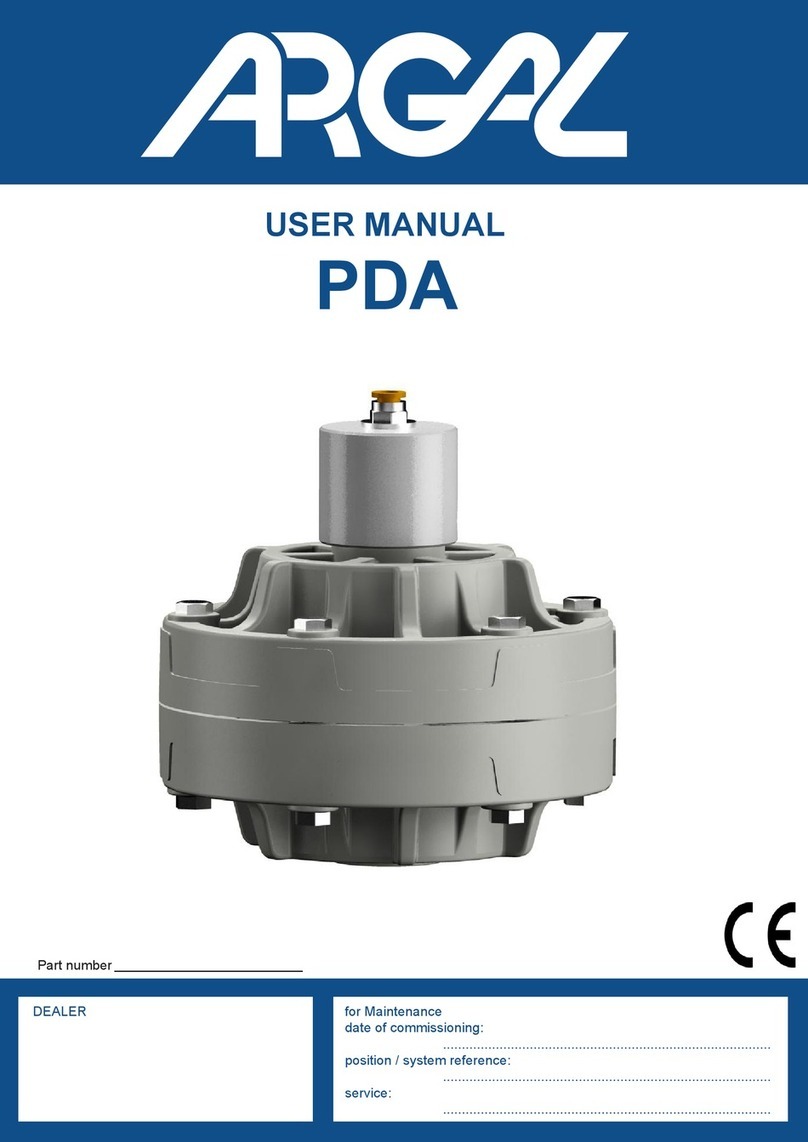
Argal
Argal PDA 75 user manual

SCHUNK
SCHUNK PFH 30 Assembly and operating manual
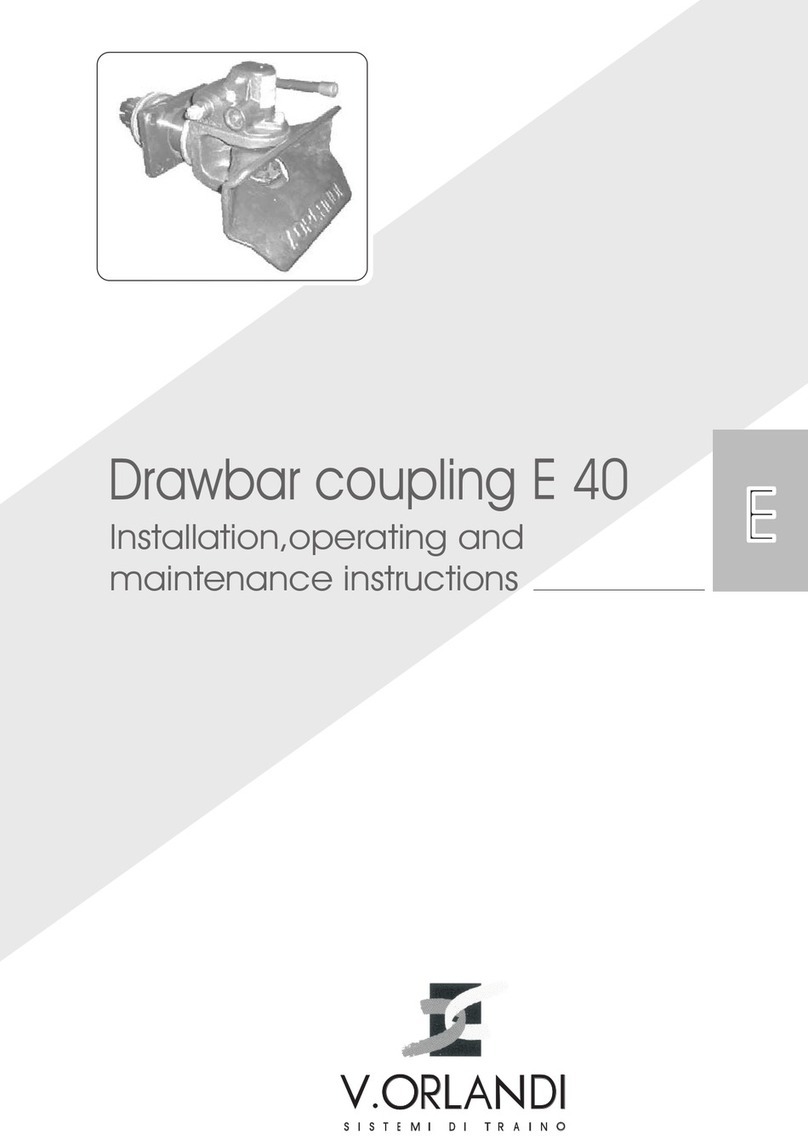
V.ORLANDI
V.ORLANDI E 40 Technical description, installation, operating and maintenance instructions
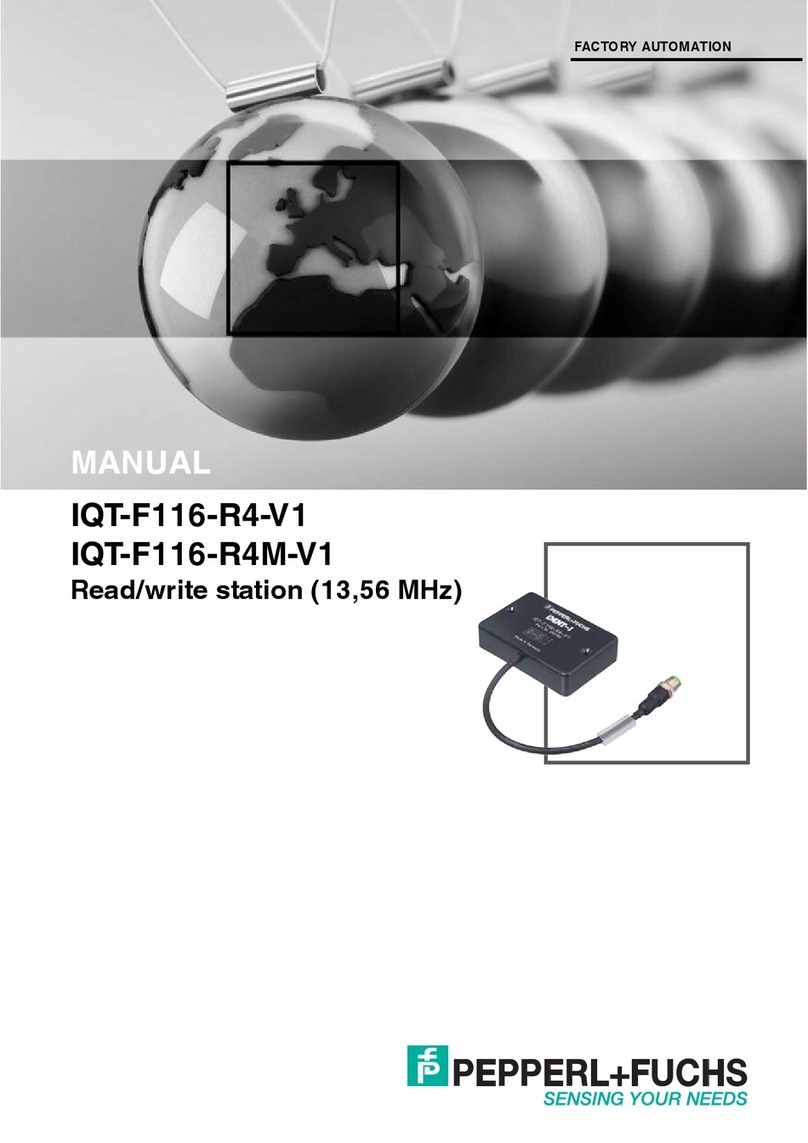
Pepperl+Fuchs
Pepperl+Fuchs IQT-F116-R4-V1 manual
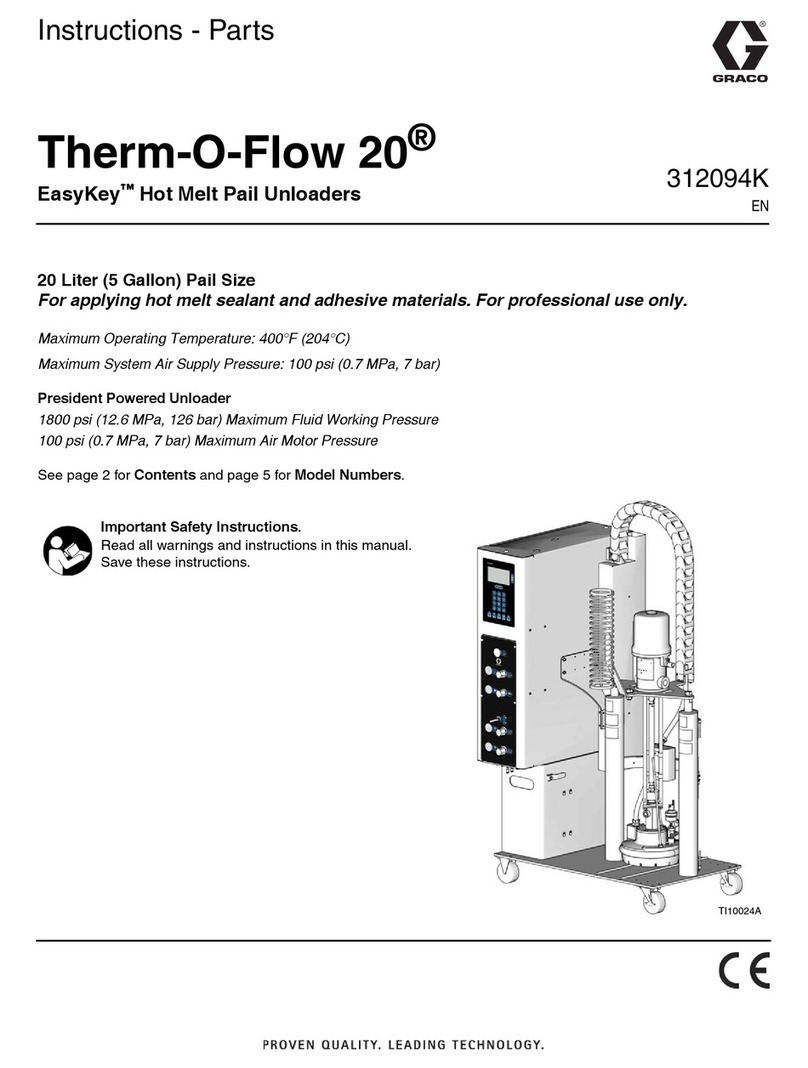
Graco
Graco Therm-O-Flow 20 EasyKey instructions
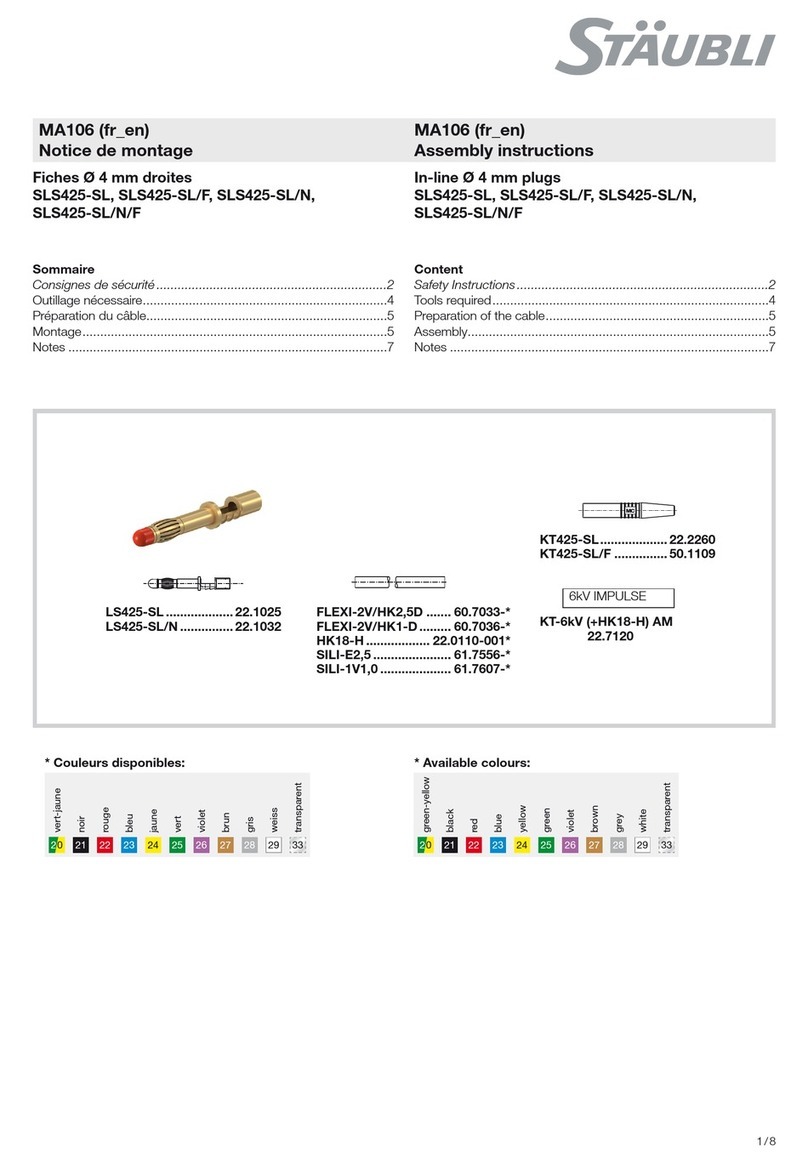
Staubli
Staubli SLS425-SL Assembly instructions

